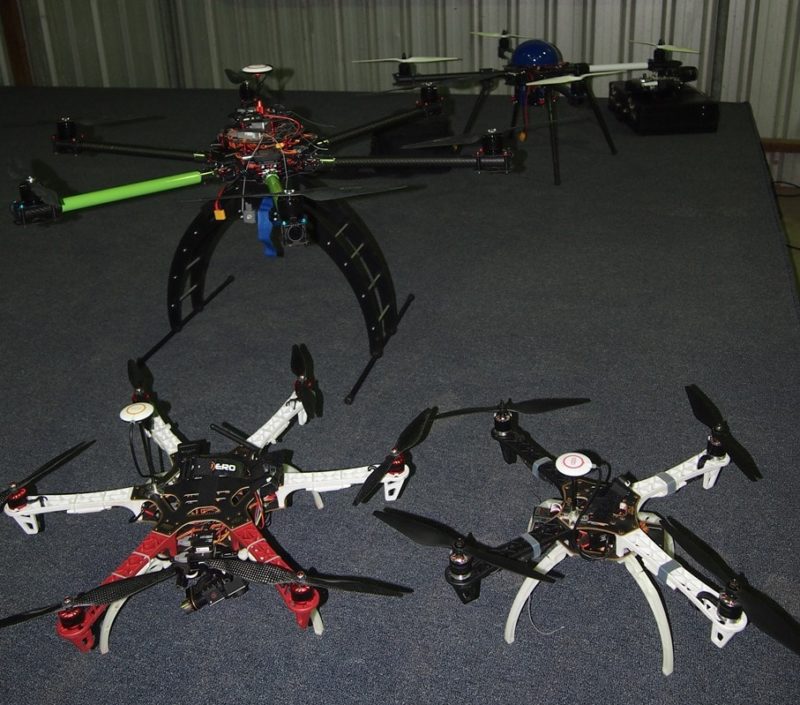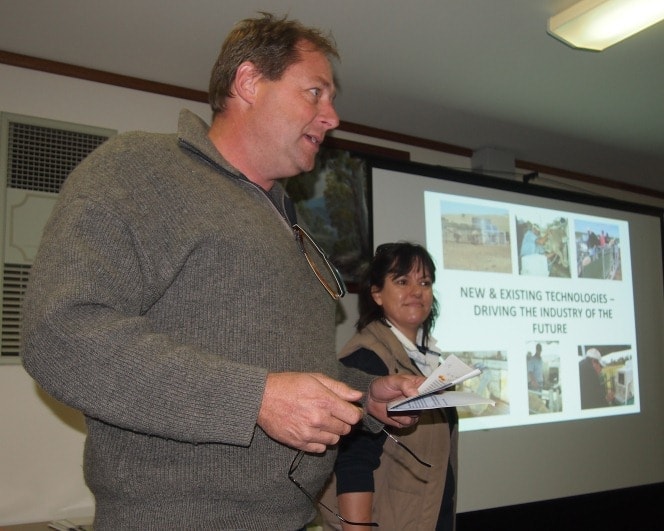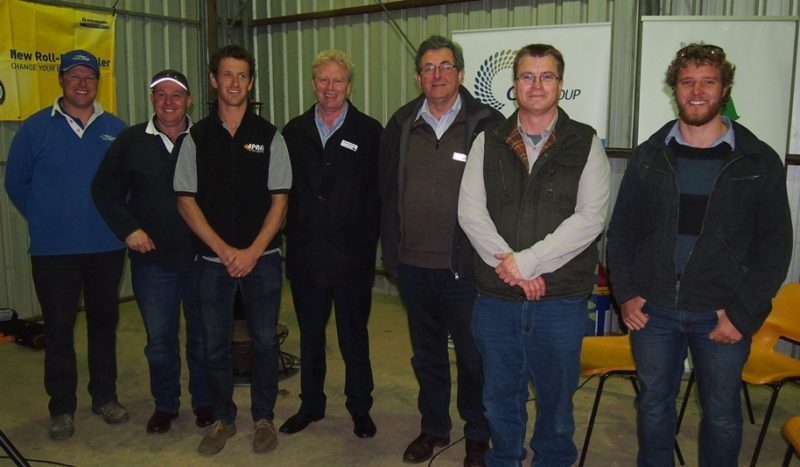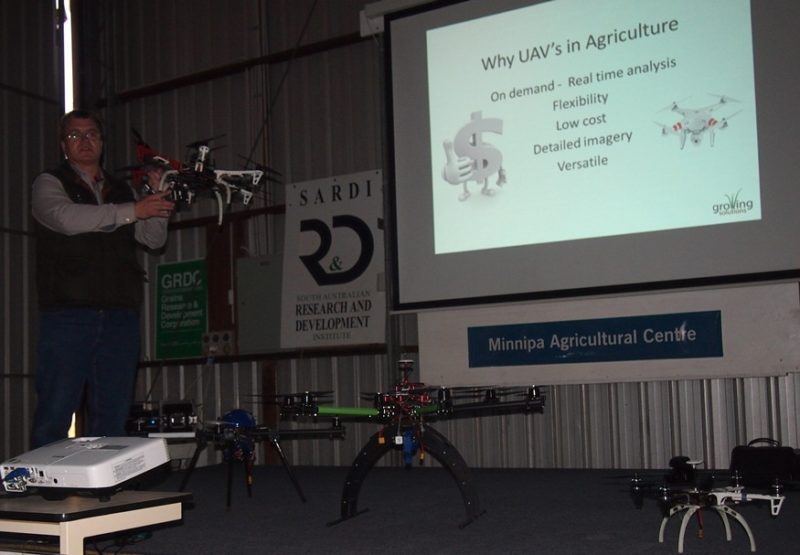EPARF Member Day 2015
The annual member day focused on Innovation and Technology, providing EPARF members with new practical tools and management opportunities available for their farming business. The program consisted of whole group presentations on engineering, weed sensing, mapping, climate forecasting, protein sensors and unmanned aerial vehicles. Small group sessions were presented on water leak detection units, soil moisture probes, eXtensionAus platform, livestock innovations and the latest Apps for farmers. The day was well attended with eight expert key note speakers presenting.
James Barr for the University of Adelaide presented the latest examples of farm machinery research with benefits relating to zero tillage creating less soil disturbance and retaining more surface residues, bentleg opener tines for low soil throw at seeding, improvements in crop establishment, soil inversion technology to improve productivity and plant sensor devices for a potential decision making tool.
Sam Trengrove spoke on new weed sensor technology for improved herbicide use focusing on targeted site specific applications and the next generation weed identification sensors for improved efficiency in weed control. Improvements in weed control efficiency will typically be achieved through reduced herbicide usage where herbicide is not required.
Making sense of seasonal forecasts was delivered by climate extension specialist Graeme Anderson focusing on new knowledge and understanding about what drives our wetter and drier seasons, the latest on climate change and adoption options. Farmers were encouraged to focus on the things under their control, key points for key decisions, known benchmarks and threshold and mapping response options from seasonal forecasts.
Business farmer Ashley Wakefield spoke about collecting accurate farm agriculture data for protein and moisture, this information being the key to our future farming systems. The presentation demonstrated the CropScan 3000H on combine analyser provided accurate and meaningful information that farmers and agronomist can use to improve productivity and profitability from their farms.
Information on the use of leak detention units by Shane Oster was a popular presentation. Saving water is on everyone’s agenda. Shane also addressed soil moisture probes, their use as a tool to know exactly how much water is in your profile which will influence decision making on fertiliser applications, grain marketing and risk management strategies.
Apps for farmers by Leighton Peace, was a very interesting presentation. Leighton recommended some of the latest interesting apps available, along with promoting the publication by AEA on Smartphone Apps for Smart Farmers V2.
Doctor Robert Norton, regional director for Australia and New Zealand for the International Plant Nutrition Institute, based in Horsham revealed to farmers the latest online research extension platform ‘eXensionAUS'. The project presents significant development in making available information an expert advice to grain growers in a timely manner. It has the potential to change the way Australian grain growers approach cropping issues by providing open access to leading industry experts.
Livestock innovations provided by Michelle Cousins, Cousins Merino Services, delivered information on the latest technologies available. Michelle said it was important to realise that new technology or innovations aren't the magic answer to a more easily managed profitable flock enterprise, but it creates opportunities for the producer and should be based on individual needs and clear objectives of achievement outcomes.
The last presentation was on unmanned aerial vehicles presented by Leighton Pearce, Growing Solutions. Even though UAVs or drones in agriculture, is a relatively new industry, it is one that is growing rapidly. UAVs offer a platform that is work safety conscious, environmentally friendly and saves time and money. The ultimate adoption on the farm will result from production increases.





